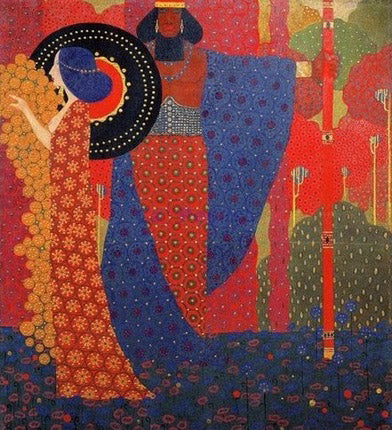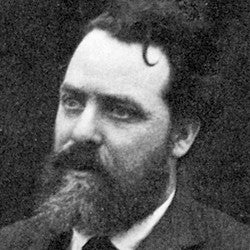Born in Murano in 1878, he died in Venice in 1947. he studied at the Academy of Fine Arts in Venice. Painter close to "Art Nouveau", he applied his techniques to glassmaking. He worked for Artisti Barovier in 1913, for Cappellin Venini & Co. from 1921 to 1925, for MVM Cappelin & Co. in 1925 and 1926, for S.A.I.A.R. Ferrro Toso in 1930, for A.V.E.M . in 1932, for Barovier Seguso Ferro in 1933, for F.lli Toso in 1938 and after that for S.A.L.I.R .
Biography
1878-1905
Vittorio Zecchin was born in Murano in 1878. The son of a glass technician, he graduated from the Academy of Fine Arts in Venice.
Impatient with the late nineteenth-century verismo culture that he meets here, he feels rather attracted by the stimuli offered by the Venetian Biennials that he frequents by coming into contact with symbolist research and the environment of the Viennese secession.
The meeting with the mystical and symbolist painting of Jan Toorop in 1905 is fundamental in this period.
1906-1915
Since 1909 he shares the experience of the group of artists linked to Ca’ Pesaro and participates in their exhibitions.
And in 1910 the other fundamental encounter with the refined production of Gustav Klimt dates back.

In this context the friendship with the painter Teodoro Wolf Ferrari is born, with which he shares a growing interest in the applied arts: together with him he undertakes in particular a significant research on the expressive potential of mosaic glass, whose results are presented in Monaco in 1913 and at the Venice Biennale in 1914.
In 1913, Zecchin's singular presence at the annual Ca’ Pesaro exhibition also dates back to 1913. In a dedicated room he realises the decoration The Fairy Garden, in extreme harmony with the glasses displayed in the same space by Giuseppe Barovier .
In the same year he participated with pictorial works in the first exhibition of the Roman Secession and in the subsequent editions of 1914 and 1915.
To 1914 the extraordinary pictorial-decorative cycle on Le Mlle and una notte, dated for the Hotel Terminus in Venice and already defined, the "masterpiece of liberty painting in Venice" must also be dated.
1921-1929
In 1921 he was called to take on the artistic direction of the new glassworks founded that year by Cappellin and Venini, for whom he designed glass that, having abandoned every superfluous decoration of late nineteenth-century heritage, stood out for its extreme novelty and refinement. Vetri di Zecchin are exhibited, among other things, at the Biennials of Decorative Art at Monza in 1923 and 1925, the year in which they also take part in the Paris Expo where they are highly successful. After the dissolution of the Cappellin Venini, Zecchin follows Giacomo Cappellin to the M.V.M. Cappellin & C . where he worked as artistic director until the end of 1926 continuing his research on the stylization of the shape of the very light blown. Parallel to the tireless activity of glass designer, from the Twenties he dedicated himself, albeit episodically, to the art of mosaic and to the design of furniture, conceived mostly in collaboration with the architect Giuseppe Berti, with whom he presented himself at the Biennial of Monza in 1923 and 1927. In this edition are also exhibited silver for liturgical use made to a design by Zecchin himself.
1930-1947
After the experience with Cappellin, he continued, during the thirties, to devote himself to the creation of very refined glasses, collaborating with several glassworks: the Ferro-Toso (1930), the A.V.E.M. (1932-1933), the S.A.L.I.R . (1932-1938), the Barovier Seguso Ferro (1933-1934) and the F.lli Toso (1938). During the thirties and in the last decade of his life, he also devoted himself to teaching collaborating with several Venetian professional institutes including the "School for the Glass Industry" in Murano (in 1934) and the school for glass apprentices Scuola Abate Zanetti (since 1936), making use in the teaching activity of two brochures written by himself, one on the history of glass", the other on the mosaic.
He died in 1947.

Bibliograpy
Vittorio Zecchin: Transparent Glass for Cappellin and Venini
Exhibitions
https://correr.visitmuve.it/it/mostre/archivio-mos...
Credits


コメントを書く
全てのコメントは、掲載前にモデレートされます
このサイトはhCaptchaによって保護されており、hCaptchaプライバシーポリシーおよび利用規約が適用されます。